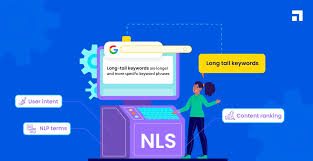In the ebb and flow of our life online, WhatsApp Web has become one of our main interfaces for communication. We’re busy with so many different conversations—it’s like we’re trying to keep track of our friends’ numbers, our own lives—so as a result we get thousands of messages, links and files coming in every day. Doing our best to sort through all this sometimes gets to be like finding a needle in a haystack. But what if you could just ask like you would in a real conversation? That’s what happens when you ask some real questions in WA Web—you turn your search bar into an intelligent assistant.
Moving Beyond Basic Keywords
Since the beginning of the Internet age we have adapted our search approach to recognizing what words people say. You might Google things like “pizza” or “Italian. ” The answer should certainly come, but that could be a hit-or-miss issue. After all, you’ll probably have to scroll through thousands of messages to find the exact word you say. Well, as we all know WhatsApp Web search is much, much more advanced than this. It will recognize context and what your target is thinking, so you can simply ask with full sentences.
How It Works: Asking Instead of Telling
For the most part this feature, also has a simple approach. You’re not thinking about perfect keyword, you just ask a question. Open WhatsApp Web in your browser, click on search magnifying glass and ask a full question. [Full question.
- You do n’t need to look for flight info. Just ask ‘ what time is my flight tomorrow ‘.
- When you want to find Sarah address you might try ” Can you send me Sarah ‘s address again “
- When searching for photo dog, type ” That picture of my dog you sent last week “
The amazing algorithm that powers WA Web takes the conversation you are talking in and looks for not just matching words, but what you are trying to say about the topic of your query. It will look for temporal context (that might be: “yesterday” or “last month”) and even look for different kinds of media and links, as well as documents. This automatic approach narrows down your results to the exact message you are trying to find in a fraction of the time.
Practical Applications for Everyday Use
You’ll save a lot of time and frustration by simply using natural language searches in your daily life. Think of it like this: at work, you need to quickly refer to a deadline for a project that your boss mentioned. Rather than trying to fiddle with all the messages in your chat, just type into WhatsApp Web: “What is the deadline for the project? ” The search will most likely bring up the exact message in which the date was announced.
Or perhaps last week a friend sent you a link to some great documentary to watch. So instead of trying to remember the keywords that they might use in the title, you could ask for a ‘can you re-send that documentary link about the ocean? ’ It is so incredible how many of the links that the WA Web platform can pull from this contextual request will be from your personal information store you can query at will.
Maximizing Your Search Efficiency on WA Web
To become a truly great pro at the search bar on WhatsApp Web, there are a few things you need to do before you can rock the bow and arrow with precision. First thing’s first: “that video” may work at times, but “that funny cat video from Mark on Tuesday” will be much more specific and specific. Second tip: Use filters. Now that you’ve filled up your search bar with real words, WhatsApp Web also has tabs you can use to sort your results by unread messages, links, photos, videos and documents, so this two-step magic is the new one-two punch for being an instant pro at this bar.
You also want to think about that the search takes advantage of all the text it can on you, including text in images (via OCR) and documents you’ve received so that your queries are even more powerful. The more you use this feature in WA Web the easier it will get, and the more you will wonder how you ever lived without it.
Embracing a Smarter Way to Find Information
Natural language processing in WA Web is one of the most significant pieces of tech progress we can expect from the next 10 years. It has become a real acknowledgement of the fact that our brains operate not in isolated keywords: it operates in “flowing” questions and conversations. Once you make use of this feature, you no longer have to resort to passively scan the data you want, as you used to — before technology helped you. Now, if the next time you’re staring at a chat on WA Web — don’t just “type, ” but ask the question: you just might be surprised how quickly and accurately your digital assistant answers.

